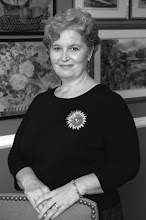Congratulations to the team of researchers led by Laurie Ozelius, PhD at Mount Sinai School of Medicine for discovering the latest gene associated with dystonia. The GNAL gene is now the fourth associated with primary torsion dystonia, the symptoms of which may vary from focal to generalized, adult-onset or childhood-onset.
This discovery was made possible by collaboration among
several movement disorders centers and over 20 years of partnering with
affected families to collect samples and data. The movement disorders team at
Beth Israel Medical Center led by Susan Bressman, MD played a major role in
outreach to affected families, including working with the DMRF to advertise the
need for volunteers through the Dystonia
Dialogue newsletter and other media.
The DMRF is extremely proud to have partially supported this discovery. We extend our sincere thanks to all of you who support the DMRF and make it possible for us to fund essential research such as this. We’re also grateful to the 40+ families who participated in this study. The GNAL gene provides another clue along the trail toward improved treatments and a cure. And in the meantime, this discovery will lead to additional options to affected families in terms of diagnosis and identifying family members who may be at risk of inheriting the mutations associated with this gene.
DMRF’s in-house scientist, Dr. Jan Teller said of this discovery, “Every time researchers identify a gene, another piece of the puzzle falls into place to clarify our understanding of dystonia. The protein associated with the GNAL gene may hold important clues about how dystonia originates in the brain and potential new strategies for treatment.”
Many thanks to the researchers who contributed to this study and have given us the next piece of the dystonia puzzle. This latest discovery reflects the core of what the DMRF family is all about: researchers and affected families collaborating toward the common goal of better understanding dystonia and finding a cure.
Click here to read more about the GNAL gene discovery or go to: http://ow.ly/gdXHW












